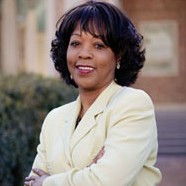Honoring and Celebrating Our Differences
By: Aorn Staff
Published: 8/26/2021
Honoring and Celebrating Our Differences

 Are you embracing members of minority groups and welcoming all patients and staff, regardless of their race, ethnicity, sexuality, and physical ability? What you say, and more importantly how you act, is more
important than ever, according to Rumay Alexander, EdD, RN, FAAN, a professor at the University of North Carolina School of Nursing at Chapel Hill.
Are you embracing members of minority groups and welcoming all patients and staff, regardless of their race, ethnicity, sexuality, and physical ability? What you say, and more importantly how you act, is more
important than ever, according to Rumay Alexander, EdD, RN, FAAN, a professor at the University of North Carolina School of Nursing at Chapel Hill.
She says creating a workplace culture that honors and celebrates diversity in the staff you hire and the patients you care for requires a strategic mindset. Healthcare professionals have been talking about developing diverse and inclusive workspaces for years, according to Dr. Alexander. She implores facility leaders to act on creating and sustaining brave workspaces where patients and staff feel comfortable being their full, authentic selves.
During the closing day keynote address at Virtual OR Excellence on Friday, November 20 from 3-4pm ET, Dr. Alexander will discuss why making diversity a core value is the right thing to do and the key to future growth. She shares what it means to be inclusive in today’s healthcare environment and why it’s important to build a diverse team.
What does it mean for healthcare leaders and staff to have an inclusive state of mind?
It involves recognizing the legitimacy of all people and valuing them as individuals. It means allowing all employees to authentically engage and participate in patient care in a humanitarian way as part of a focused team. It demands working with integrity and following the ethics of your organization by living out its mission, vision, and goals. At the end of the day, working in an inclusive workplace is good for everyone’s well-being. Each of us want to feel valued and want the opportunity to be our best selves without having to compromise our identity or values.
Why is it important to build a diverse staff?
Facility leaders must be aware of the demographics of the patient population they serve. Patients have choices for where they’ll go for care and pay attention to facilities that indicate they understand them from a cultural perspective. Patients want to be seen by and encounter diverse teams of providers. Some facilities’ websites include pictures of diverse staff members, but patients don’t see anyone who resembles the images when they arrive for care. Their experience is nothing like what they expected the moment they interacted with the facility. Real-life strategy must match marketing tactics.
What are the indicators of an inclusive workplace?
Patients and staff members will look past your words and assess your actions. They’re looking for clues that say, “You get me, and patient care here is not a cookie-cutter approach.” Diversity is now an expected part of doing business. Your patients and staff must be representative of all races, genders, physical abilities, generations, and sexual orientations. If you say diversity is important and believe it should be part of your facility’s mission, it must show up in your everyday actions and workplace culture.
How can staff members promote inclusivity?
All the ways an organization, including those who work in it and the key decision-makers, must regularly demonstrate diversity. Leading by example is important, but there are other ways to build a diverse culture. Perform a deep analysis to understand your work environment. Think through the services you offer. You must be tactical, not just strategic. Be aware of the disruptive demographics that would lead you to change your strategic planning and be agile in how you respond to those market forces. It takes prioritization and focus. It takes time, money, and people. It must be made a priority.
What do you want attendees to think about after listening to your talk?
I hope they leave the session with an improved awareness and understanding of the disruptive demographics within their communities. I want them to be able to distinguish between equality and equity and have a realistic understanding of how inclusive excellence works in service and leadership. I’ll teach them vital strategies for achieving those goals. Patients are in their most vulnerable states when they arrive for care. There is an inequity of power. They trust that you will care for them, and those like them, to the best of your abilities. Healthcare professionals have the honor of caring for diverse individuals. It’s a sacred place. It’s where science, spirit and service come together. Diversity happens by design, not by default. It takes prioritization and focus. It takes time, money, and people. It must be made a priority.
This article originally appeared in Outpatient Surgery Magazine. This version has been edited specifically for The Periop Life.

